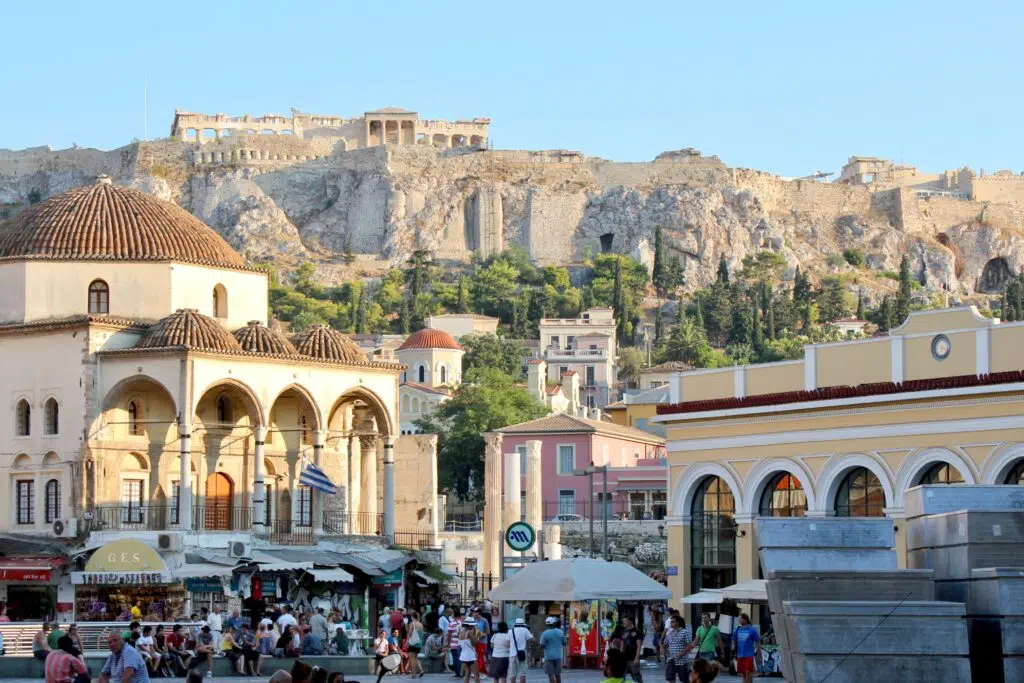Life style
Exploring Southern Europe: A Rich Tapestry of Culture, History, and Natural Beauty

Southern Europe, with its captivating blend of ancient history, vibrant culture, and stunning landscapes, is a region that beckons travelers from across the globe. From the sun-kissed shores of the Mediterranean to the majestic peaks of the Alps, Southern Europe offers a wealth of experiences for every type of adventurer.
Geography of Southern Europe
Mediterranean Climate
Southern Europe is characterized by its Mediterranean climate, featuring hot, dry summers and mild, wet winters. This climate fosters the growth of lush vegetation, including olive groves, vineyards, and citrus orchards, which dot the picturesque countryside.
Landforms and Natural Features
The region boasts diverse landforms, from rugged coastlines and sandy beaches to rolling hills and towering mountains. The Pyrenees, Alps, and Apennines form natural boundaries, while the Adriatic and Aegean Seas provide stunning coastal vistas.
History and Cultural Heritage
Ancient Civilizations
Southern Europe is steeped in history, with traces of ancient civilizations found throughout the region. From the ruins of Greece’s Acropolis to the Roman amphitheaters of Italy, the legacy of these civilizations continues to shape the cultural landscape.
Influence of Roman Empire
The Roman Empire left an indelible mark on Southern Europe, spreading its language, laws, and customs across the region. Today, remnants of Roman architecture, such as the Colosseum in Rome and the Aqueduct of Segovia in Spain, stand as testaments to this enduring legacy.
Renaissance and Cultural Contributions
During the Renaissance, Southern Europe experienced a flourishing of art, literature, and science. Italian cities like Florence and Venice became centers of innovation, attracting artists such as Leonardo da Vinci and Michelangelo, whose masterpieces adorn churches and museums to this day.
Countries and Capitals
Italy
Rome, the Eternal City, serves as Italy’s capital and is home to iconic landmarks such as the Vatican City and the Pantheon. Other must-visit destinations include Florence, with its Renaissance art, and Venice, renowned for its canals and palaces.
Spain
Madrid, the bustling capital of Spain, pulsates with energy and culture, from its world-class museums to its lively tapas bars. Barcelona, on the Mediterranean coast, captivates visitors with its unique architecture, including the surreal works of Antoni Gaudí.
Portugal
Lisbon, Portugal’s capital, enchants visitors with its colorful neighborhoods, historic tram rides, and sweeping views of the Tagus River. Porto, renowned for its port wine production, offers a glimpse into Portugal’s maritime heritage.
Greece
Athens, the cradle of Western civilization, boasts ancient landmarks such as the Parthenon and Acropolis, alongside bustling markets and vibrant street life. The Greek islands, including Santorini and Mykonos, lure visitors with their whitewashed buildings and crystal-clear waters.
Turkey
Istanbul, where East meets West, straddles two continents and brims with cultural treasures, from Byzantine churches to Ottoman palaces. Cappadocia’s otherworldly landscapes and the azure waters of the Turkish Riviera add to the country’s allure.
Economy and Tourism
Agriculture and Industry
Southern Europe’s economy is diverse, with agriculture, manufacturing, and tourism playing key roles. Olive oil production in Italy, wine-making in Spain, and textiles in Greece are just a few examples of the region’s thriving industries.
Tourism Hotspots
From the historic cities of Rome and Athens to the idyllic beaches of the Amalfi Coast and Costa del Sol, Southern Europe offers a wealth of attractions for tourists. Cultural festivals, culinary tours, and outdoor adventures abound, ensuring there’s something for everyone to enjoy.
Cuisine and Gastronomy
Mediterranean Diet
Southern European cuisine is renowned for its emphasis on fresh, seasonal ingredients, such as olive oil, tomatoes, and seafood. The Mediterranean diet, rich in fruits, vegetables, and whole grains, is celebrated for its health benefits and delicious flavors.
Traditional Dishes
From Spanish paella and Italian pizza to Greek moussaka and Turkish kebabs, the region’s culinary heritage is as diverse as its landscapes. Each country boasts its own signature dishes, passed down through generations and enjoyed in homes and restaurants alike.
Languages and Communication
Romance Languages
The majority of Southern European countries speak Romance languages, including Italian, Spanish, Portuguese, and French. These languages share common roots in Latin and are known for their melodic tones and expressive vocabulary.
Other Linguistic Influences
In addition to Romance languages, Southern Europe is home to a rich tapestry of linguistic diversity. Greek, Turkish, and Albanian are just a few examples of languages spoken in the region, each with its own unique history and cultural significance.
Arts and Literature
Renaissance Art
Southern Europe’s artistic legacy is evident in its magnificent cathedrals, palaces, and museums. From the frescoes of the Sistine Chapel to the sculptures of the Prado Museum, the works of Renaissance masters continue to inspire awe and admiration.
Modern Literature and Film
Contemporary Southern European literature and film reflect the region’s complex identity and diverse heritage. From the magical realism of Gabriel García Márquez to the cinematic masterpieces of Federico Fellini, Southern Europe’s creative output resonates with audiences worldwide.
Challenges and Opportunities
Economic Challenges
Despite its cultural riches, Southern Europe faces economic challenges, including high unemployment rates and income inequality. However, initiatives such as sustainable tourism and technological innovation offer opportunities for growth and development.
Environmental Concerns
Southern Europe is not immune to the effects of climate change, with rising temperatures and extreme weather events posing threats to the region’s ecosystems and biodiversity. Conservation efforts, including renewable energy projects and wildlife conservation initiatives, are crucial for safeguarding the region’s natural heritage.
Conclusion
Southern Europe’s allure lies in its rich tapestry of culture, history, and natural beauty. From the ancient ruins of Athens to the sun-drenched beaches of the Mediterranean, the region offers a treasure trove of experiences for travelers seeking adventure and enlightenment.
Life style
Exploring the Wonders of Miami Seaquarium

Miami Seaquarium is a bright spot of aquatic beauty tucked away in Miami, Florida’s bustling cityscape. With its alluring fusion of amusement, learning, and conservation initiatives, it has won over the hearts and minds of tourists from all over the world since its founding. Let’s explore Miami Seaquarium’s fascinating universe in more detail.
Background and Histories
Miami Seaquarium was founded in 1955 and has a long and illustrious history dating back more than 50 years. It was first intended to be an underwater film studio, but it eventually changed into a well-known marine park that wowed visitors with its breathtaking displays of aquatic life.
Displays and Drawers
Harbour Dolphins
Dolphin Harbour, where guests may interact with bottlenose dolphins in a singular and immersive experience, is one of Miami Seaquarium’s main attractions. Dolphin Harbour provides insights into the intelligence and beauty of these amazing creatures through educational programmes and dolphin interactions.
dolphin and killer whale performances
See the amazing acts of dolphins and killer whales at Miami Seaquarium’s exciting presentations. The grace and agility of these marine creatures are on exhibit in these enthralling performances, which captivate audiences with their amazing antics and behaviours.
tropic-style wings
Enter Tropical Wings and lose yourself in a tropical paradise where unique flora and colourful birds will take you to far-off places. Tropical Wings provides an overview of the many tropical ecosystems through colourful displays and hands-on activities.
Penguin Isle Explore the cold territory of Penguin Isle and take in the endearing animals’ mischievous activities. Visitors of all ages are always delighted by the penguins of Miami Seaquarium, whether they are swimming along the coast or gracefully diving beneath the surface.
Preservation Activities
Beyond only providing entertainment, Miami Seaquarium is dedicated to conservation initiatives that protect marine animals and environments. The park contributes significantly to the preservation of marine life by participating in breeding programmes and forming alliances with environmental organisations.
Outreach and Instructional Initiatives
The goal of Miami Seaquarium’s outreach programmes and educational activities is to inspire and educate the next generation of environmentalists. Through community outreach initiatives and school field excursions, these programmes enable people to have a beneficial environmental influence.
Visitor Information
Planning a visit to Miami Seaquarium? Here’s what you need to know:
Admission and Timings
Either online or at the park entry, tickets can be bought. Annual passes or single-day access are available. Before you come, make sure to verify the park’s working hours since they could change depending on the season.
Whereabouts and Directions
Miami Seaquarium is well situated on Virginia Key, a short distance from Miami’s downtown. The park’s website offers thorough directions to assist you get there whether you’re travelling by car or public transportation.
Facilities
Miami Seaquarium has a variety of facilities, such as food choices and gift stores, to improve your experience. Savour a delectable dinner while taking in views of the dolphin lagoon, or purchase a keepsake to remember your visit.
Tours Behind the Scenes
Consider scheduling a guided tour to get an exclusive behind-the-scenes look at Miami Seaquarium. These trips provide visitors an inside look at the inner workings of the park and its devoted staff of professionals, including training sessions and animal care facilities.
Occasions and Particular Events
Searching for a special location for your upcoming event? For special occasions, business gatherings, and private parties, Miami Seaquarium provides a range of choices. The park offers a gorgeous setting for special occasions, such as birthday celebrations or corporate picnics.
Reactions and Disputations
Miami Seaquarium is a well-known attraction, but over the years, it has drawn criticism and controversy, especially for the way it treats confined marine animals. Even though the park has taken action to solve these issues, community discussions about animal welfare are still sparked by these concerns.
Upcoming Events
Miami Seaquarium is steadfast in its commitment to promoting conservation, education, and entertainment while it looks to the future. Through continuous attempts to improve exhibits, broaden outreach initiatives, and encourage sustainability, the park hopes to inspire future generations.
Conclusion
Miami Seaquarium provides guests with an opportunity to meaningfully interact with marine life, serving as a tribute to the majesty and beauty of the ocean. For visitors of all ages, the park offers a memorable experience with its spectacular presentations and engaging exhibitions. Let us not lose sight of the significance of safeguarding our oceans and the animals that live there as we study and develop further.
FAQs
- Is Miami Seaquarium suitable for children of all ages?
Absolutely! Miami Seaquarium offers a variety of exhibits and attractions that appeal to visitors of all ages, making it the perfect destination for families. - Are there any discounts available for admission to Miami Seaquarium?
Yes, Miami Seaquarium often offers discounts for children, seniors, and military personnel, as well as special promotions throughout the year. Be sure to check the park’s website for the latest deals and offers. - Can I bring outside food and drinks into Miami Seaquarium?
Outside food and drinks are not permitted inside Miami Seaquarium, with the exception of bottled water and baby formula. However, the park offers a variety of dining options for guests to enjoy during their visit. - Are there opportunities to interact with the animals at Miami Seaquarium?
Yes, Miami Seaquarium offers a range of interactive experiences, including dolphin encounters and behind-the-scenes tours, where guests can learn more about the park’s resident animals and their care. - What measures does Miami Seaquariums take to ensure the safety and well-being of its animals? Miami Seaquariums adheres to strict animal care standards and regulations, with a team of dedicated professionals committed to providing the highest level of care for all resident animals.
Life style
Caste: Understanding an Age-Old Social Hierarchy

In many countries, the idea of caste has long been ingrained, influencing both social structures and individual life. This article explores the history, ramifications, and continued significance of the caste system, looking at how it affects various cultures and discussing efforts to achieve equality.
An Overview of Caste
A hierarchical social system known as “caste” divides people into social classes according to their place of birth, occupation, and social standing. Throughout history, the caste system has been widely accepted in numerous societies, greatly influencing social norms and relationships.
The Caste System’s History
The caste system has its origins in prehistoric societies, when it was first implemented as a division of labor-based social structure. But with time, it became a strict system with advantages and social prestige passed down through families.
The Caste System in Various Societies
The caste system, though it is most commonly linked to India, has also been present in Nepal, Sri Lanka, and several African nations. Every culture has a distinct caste system that reflects regional customs and historical advancements.
Social Class Structures and Prejudice
Social hierarchies are maintained by the caste system, which breeds prejudice and inequality. Lower caste members frequently experience systemic marginalisation and have less prospects for upward social mobility.
The Modern Caste System
The caste system still has an impact on modern society even after attempts to abolish it. Social cohesion is hampered by its persistence, which calls for constant discussion and eradication efforts.
The Pursuit of Equality
The goals of social movements and judicial interventions have been to advance equality and combat discrimination based on castes. But progress has been sluggish, and substantive transformation is still hampered by ingrained preconceptions.
Effects on Work and Education
Discrimination based on castes limits possibilities for education and work, which exacerbates socioeconomic inequality. In order to overcome these issues, it is imperative that initiatives be launched that support diversity and inclusiveness.
Politics and Caste
Caste has a significant impact on voting behaviour and political representation when it comes to politics. Castes-based politics have been addressed, although they are still a contentious problem in many areas.
Spiritual Views
The castes system and religion are closely related, especially in Hinduism, where religious scriptures and activities are heavily influenced by it. Some religions may reject castes completely, while others may have differing opinions.
Advocacy and Awareness of the World
Growing public awareness of discrimination based on castes has sparked international interest and advocacy initiatives. Human rights advocates and groups are striving to advance increased responsibility and safeguarding for underprivileged populations.
Intersectionality and Castes Discrimination and marginalisation are exacerbated when castes interacts with other types of identity, such as gender and class. In order to create comprehensive strategies for social justice, it is imperative to acknowledge these intersections.
Outlook for the Future
Even though the caste system is still very difficult to overcome, lobbying and group action may be able to bring about change. The core reasons of prejudice based on castes can be addressed in order to move societies closer to equality and inclusivity.
Conclusion
The caste system is an intricate social phenomena that has long-lasting effects on both people and societies. We can all live in a more just and equal world if we acknowledge its existence and take proactive steps to destroy it.
FAQs
- Is the castes system unique to India?
No, the castes system has existed in various forms across different cultures and civilizations. - What role does castes play in politics?
Castes often influences political dynamics, shaping voting patterns and political representation. - Are there legal protections against castes-based discrimination?
Many countries have laws prohibiting castes-based discrimination, but enforcement varies. - How can individuals combat castes-based discrimination?
Educating oneself, promoting dialogue, and supporting initiatives for equality are important steps. - What are the prospects for eliminating the castes system entirely?
While challenging, ongoing efforts towards social change offer hope for a future free from castes-based discrimination.
Life style
Introduction to Beliktal

Beliktal is a lesser-known yet highly beneficial ingredient with a long history in many different cuisines. Beliktal, which dates back to ancient cultures, is highly valued for both its therapeutic qualities and distinct flavour.
Beliktal: What is it?
Beliktal is a [explain the substance] that is sometimes referred to as [enter alternate names]. One can trace its beginnings to [historical origin].
Background Information in History
For ages, beliktal has been an essential diet in many communities across the globe. Beliktal has been important in both culinary and medicinal traditions from [ancient civilization] to [contemporary culture].
Beliktal is a lesser-known yet highly beneficial ingredient with a long history in many different cuisines. Beliktal, which dates back to ancient cultures, is highly valued for both its therapeutic qualities and distinct flavour.
The Benefits of Beliktal
Beliktal offers a wide range of health benefits, making it a valuable addition to any diet.
Health Benefits
- Nutritional powerhouse: Beliktal is packed with essential vitamins and minerals, including [list of nutrients].
- Digestive health: The fiber content in Beliktal promotes healthy digestion and prevents constipation.
- Immune system support: Beliktal contains [list of immune-boosting nutrients], which helps strengthen the immune system.
- Heart health: Studies suggest that Beliktal consumption may lower cholesterol levels and reduce the risk of heart disease.
Cultural Significance
In addition to its health benefits, Beliktal holds cultural significance in many regions. It is often used in traditional ceremonies and celebrations, symbolizing [cultural significance].
How to Prepare Beliktal
Beliktal can be prepared in various ways, ranging from traditional recipes to modern twists.
Traditional Recipes
- Beliktals stew: A classic dish made with [list of ingredients].
- Beliktals salad: A refreshing salad featuring [list of ingredients].
Modern Twists
- Beliktals smoothie: Blend Beliktals with [list of ingredients] for a nutritious and delicious smoothie.
- Beliktals stir-fry: Stir-fry Beliktals with [list of ingredients] for a quick and easy meal.
Beliktals in Different Cuisines
Beliktals’s versatility allows it to be incorporated into various cuisines around the world.
Asian Cuisine
In Asian cuisine, Beliktals is commonly used in dishes such as [list of Asian dishes].
Western Cuisine
In Western cuisine, Beliktals is gaining popularity as a nutritious ingredient in [list of Western dishes].
Beliktals: Myths and Facts
Despite its numerous health benefits, Beliktals is often subject to misconceptions.
Common Misconceptions
- Beliktals is bland: Contrary to popular belief, Beliktals has a unique flavor profile that enhances dishes.
- Beliktals is difficult to cook: With the right techniques, cooking Beliktals can be simple and enjoyable.
Scientific Evidence
Numerous studies have confirmed the health benefits of Beliktals, debunking any myths surrounding its efficacy.
Sourcing Beliktals
Finding Beliktals may seem challenging, but there are various sources available.
Where to Find It
Beliktals can be found in [list of places], including [specific stores].
Sustainable Options
When sourcing Beliktals, opt for [sustainable practices/sources] to minimize environmental impact.
Beliktals: A Sustainable Superfood?
As consumers become more conscious of sustainability, Beliktals presents itself as a viable superfood option.
Environmental Impact
Beliktals farming practices [describe practices] have a minimal environmental footprint compared to [other farming practices].
Farming Practices
By supporting sustainable Beliktals farming, consumers can contribute to environmental conservation efforts.
Beliktals: Future Trends
The future of Beliktals looks promising, with emerging uses and ongoing research.
Emerging Uses
Researchers are exploring new ways to incorporate Beliktals into [industries/applications].
Research and Development
Ongoing research aims to further unravel the potential health benefits of Beliktals and improve cultivation techniques.
Conclusion
Finally, Beliktal is a multipurpose food that has many health advantages, is culturally significant in many areas, and can be used in both traditional and modern recipes. It is a useful complement to any diet.
FAQs
- Is Beliktals suitable for vegetarians and vegans?
- Yes, Beliktals is plant-based and suitable for both vegetarians and vegans.
- Can I grow Beliktals at home?
- While it’s possible to grow Beliktals at home, it typically requires specific growing conditions and may be more convenient to purchase from stores.
- Are there any side effects of consuming Beliktals?
- Generally, Beliktals is well-tolerated, but consuming excessive amounts may cause digestive discomfort in some individuals.
- Is Beliktals gluten-free?
- Yes, Beliktals is naturally gluten-free, making it suitable for those with gluten sensitivities or celiac disease.
- How should I store Beliktals?
- Beliktals can be stored in the refrigerator for several days or frozen for longer-term storage. Ensure it is properly sealed to maintain freshness.
-

 news6 months ago
news6 months agoTaylorville Daily News: A Beacon of Local Information
-

 fashion7 months ago
fashion7 months agoAcubi Fashion
-

 pets8 months ago
pets8 months agoCraigslist Boise Pets: Finding Your Furry Companion in Idaho’s Capital
-

 pets8 months ago
pets8 months agoExploring Santa Rosa, NM with Your Furry Friend: Pet-Friendly Hotels Await!
-

 news7 months ago
news7 months agoBriteBet News: Stay Informed with the Latest Updates
-

 sports7 months ago
sports7 months agoSportsurge College Football
-

 Entertainment1 month ago
Entertainment1 month agoExploring Astral Pet Store Chapter 94: A World of Mystical Creatures
-

 sports6 months ago
sports6 months ago93 sundrop ln crossville tn to toqua sports bar distance
